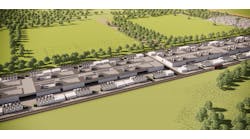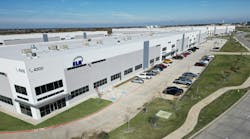By Elisa Wood
November 5, 2009
Scientific research has brought us products that offer greater energy efficiency. But is research, itself, energy efficient?
Evan Mills, staff scientist with the Lawrence Berkeley National Laboratory, raises this question and points out what may be a largely untapped market for energy efficiency companies: research labs. (See Environmental Science & Technology, http://eetd.lbl.gov/emills/pubs/pdf/sustainable-scientists.pdf.)
US researchers “unwittingly” spend about $10 billion annually on energy, he says in the article, and could cut the bill by half through sustainable practices.
It’s important to take a look at research efficiency because labs are often energy intensive. Researchers may work in hyper clean environments with sophisticated air ventilation, or they may need data centers with vast air-conditioning. Thus, a lab’s utility bills can be “staggering,” he says. Consider CERN, the European Organization for Nuclear Research, whose 230-MW capacity needs costs $80 million per year; or the US Department of Energy’s data centers, which pay $100 million per year for energy.
Money saved through efficiency could be channeled into more research. Yet only 1 to 3% of research labs operate in “green” facilities. LBNL has created a model energy efficient lab setting at its Molecular Foundry, a nanotechnology lab in Berkeley, California. With LEED gold certification, the facility has achieved energy savings 28% beyond California’s already aggressive building standard. http://www.kawneer.com/kawneer/north_america/en/news/releases/LBNL_Release_FINAL.pdf
Typically, laboratory’s can find energy savings by using premium-efficiency fume hoods and laboratory equipment, avoiding over-ventilation, limiting pressure drop in the ventilation system, engaging in energy recovery, minimizing simultaneous heating and cooling, and properly sizing space conditioning equipment to match energy needs, according to Mills.
He recommends that we reduce energy costs by including efficiency requirements in research solicitations. Labs could then calculate the cost of efficient equipment or building improvements into a proposal’s capital expenditures.
“Doing the right thing isn’t the only reason to strive for improved sustainability,” Mills says in the article. “The scientific enterprise depends on availability of ample energy and can be fettered by its cost. In the 1980s, LBNL’s particle accelerators were responsible for the vast majority of site-wide energy use. Indeed, the Bevatron’s [a particle accelerator] energy budget only allowed for ten months of experiments each year. At the time, raising the energy efficiency of the process (e.g., through improved magnets and power supplies) trimmed consumption and costs sufficiently to enable a full year of experiments to be conducted.”
Today, it appears energy research has succumbed to the syndrome of the cobbler’s children who have no shoes. Science discovers efficiencies, but doesn’t necessarily put them to use for its own purposes. Given our growing mastery of common efficiency practices in homes and businesses, research labs represent a new frontier for the energy efficiency industry.
Visit Elisa Wood at http://www.realenergywriters.com/ and pick up her free Energy Efficiency Markets podcast and newsletter.






